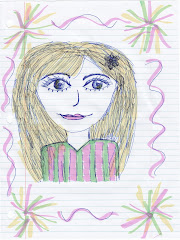Young, Carl. A., Hofer, Mark, & Harris, Judi. (2010). Grounded Tech Integration: English Language Arts. International Society for Technology in Education, 37(5), 1-5. Retrieved March 1, 2010, from http://www.iste.org/AM/Template.cfm?Section=February_No_5_4&Template=/MembersOnly.cfm&NavMenuID=4495&ContentID=25251&DirectListComboInd=D
Summary: This article, written by associate professors from various colleges, discussed how secondary English teachers could incorporate technology in their classroom to meet the variety of ELA activity types. These activity types are: reading, writing, language use, speaking/performing, and active listening/watching. The article provided various resources that teachers could look at to choose the educational technologies that best fit their instructional plans. An example was given about how various technologies could be included in the classroom when teaching the book “The Scarlet Letter” by Nathaniel Hawthorne. First, the article suggested having the students write about theme of guilt and about a time when they experienced guilt. Next, the homework for students was to create their own symbols representing an episode of personal guilt or shame, and wear that symbol to school the next day without divulging to others what the symbols represent. After that, students were supposed to blog about how they felt while wearing the symbols around all day. Then the teacher would share the blog with students from another school, and they would discuss their reactions and feelings with the other students on an online discussion board. Finally, in small groups students would create a digital video that defines and represents the theme of guilt. This lesson plan, made up of five small activities, used different educational technologies to really expand the students’ notion of “guilt” within the context of the novel.
How could teachers use the ELA activity types and technologies in their classrooms? This article would be perfect for prospective and current high school English teachers to read that are either: completely new to the idea of ELA activity types or teachers who are looking for new and exciting ways to incorporate technology into their already developed curriculum. This article provided a link that states the various ELA activity types: http://activitytypes.wmwikis.net. It also then provided a chart for each of the five ELA activity types and how teachers could incorporate various technologies into their classrooms.
Could I see myself as an English teacher incorporating these strategies? Yes, I definitely think I could incorporate some of these technological lesson plan ideas into my classroom. Of course, the amount of activity types I get to use in my classroom depends on how much access to technology the students have. Though it would be a fun activity to get students to create a digital video based on their understanding of a certain literary work, it would be impossible for them to complete if they did not have video cameras. Also, though I really liked the idea of having students collaborate with students from another school to talk about literature, that may be an unrealistic idea. Many teachers may not want to cooperate with teachers from another school, because it would force them to work with other people, and possibly change their lesson plans so that each of the classes would be reading the same text. So though it is a nice idea, I think I could only implement it if I had a friend working as a teacher at another school who would be willing to plan the activity with me way in advance. Yet the other strategies brought out in the article that dealt with free technology, like blogging, skyping and online discussion boards, I would definitely use those technologies in my classroom.
Subscribe to:
Post Comments (Atom)




No comments:
Post a Comment